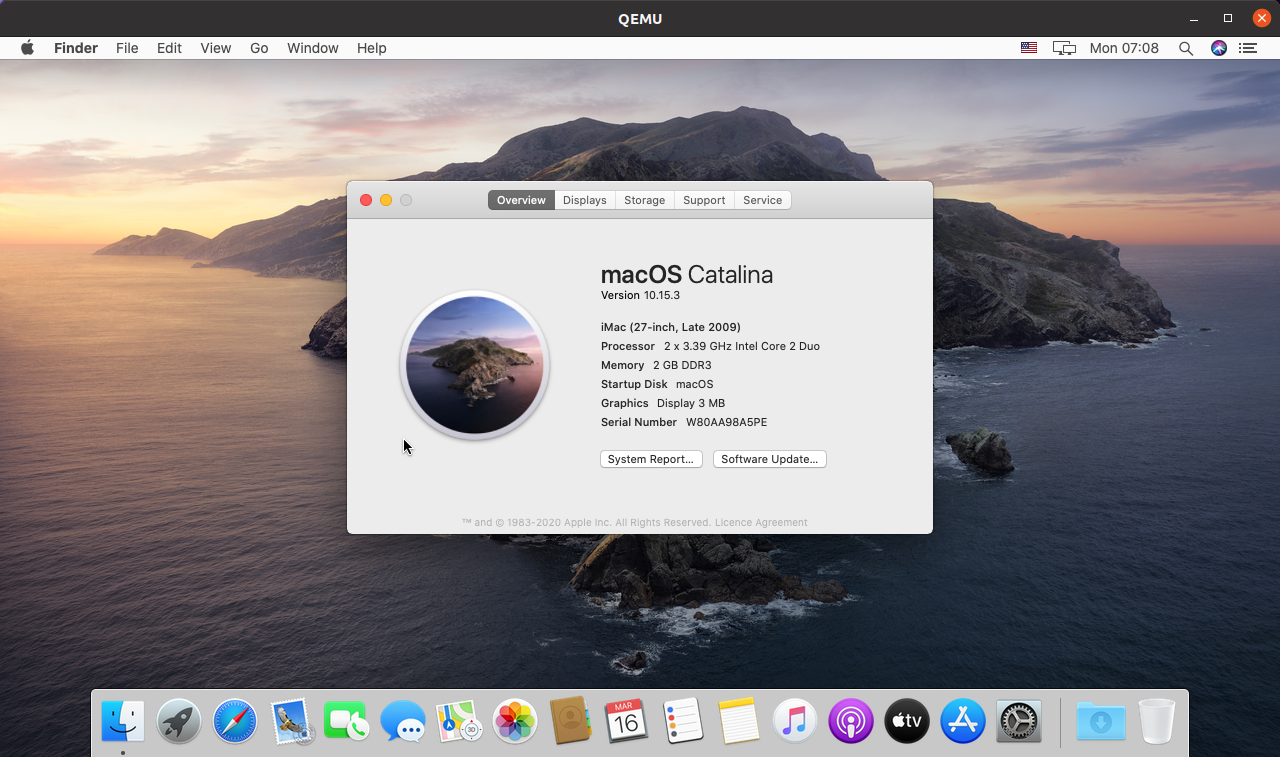
Grub2 File Manager helps you browse the list of devices and files, it also supports reading text files, opening ISO files and partition images.
Grub Mac Os

An operating system (OS) may support (U)EFI (macOS, Windows 7, 8, or 10, Linux) or not (Windows XP). Legacy boot is used for the last one, that is, the old BIOS system is used to handle boot sectors. Boot macOS, Windows, and Linux in UEFI or legacy mode on Mac or PC with UEFI or BIOS firmware.
- You need a boot loader that can load certain non-Linux kernels directly; GRUB can boot macOS, Mach, BSD, and some other kernels directly. You want or need to use Secure Boot—most distributions that support Secure Boot do so through a combination of Shim and GRUB 2.
- Apr 02, 2020 If you're on macOS High Sierra or older, you'll need to visit the App Store to check for updates. Search for 'macOS' on the App Store to download the latest version. On Linux, updates are more for usability than security, but still as important. Depending on your distro, you may find an option to update in the system settings.
Grub2 File Manager
By using Grub2 File Manager, you can browse files and folders on all partitions on your computer. In addition to reading text files, it also supports booting from the files it supports.
- Supports detection and booting of Linux distributions from ISO files. List tested (incomplete):
- 4MParted.
- Arch Linux.
- Bitdefender.
- CentOS.
- Clonezilla.
- Debian Live.
- Fedora.
- Gentoo.
- Gparted.
- Kali Linux.
- Linux Lite.
- Linux Mint.
- Manjaro.
- MiniTool Partition Wizard 9.1.
- Slackware Live Edition.
- Ubuntu.
- WifiSlax 4.12.
- WifiSlax64.
- antiX.
- gNewSense.
- openSuse.
- Boot the ISO, IMG and IMA file with Grub4dos.
- Boot WinPE 7/8/8.1/10 (.wim) via wimboot.
- Boot WinPE XP (.wim) and Windows VHD 10/8.1/8/7/XP (.vhd, .vhdx) with NTBOOT via Grub4dos.
- Boot Grub4dos via grldr and grub.exe file.
- Boot .efi file (UEFI).
- Load configuration of Grub2 (grub.cfg) and Grub4dos (menu.lst).
- View images (.png, .jpg, .jpeg) by display as background.
- Open the ISO, PartIMG files and files that it supports to view the files and folders within it.
For the files it supports, you can place these files anywhere on your computer and then access them for processing. You can put your ISO file (such as Ubuntu, Linux Mint…) on your hard drive and boot it from AIO Boot on USB. To quickly list files, you should copy them to the /AIO/Files directory, then press the j key from the Grub2 menu to quickly list these files. However, I recommend that you Integrate the files through AIOCreator.exe, unless you can not run it, or you are using Linux.
From the Grub2 main menu, press d for quick access to the File Manager menu.
Command
You can use the ls command to list devices and files. Press c to enter commands.
List the device list, including hard disk, floppy disk, CD/DVD…
List the folders and files on the root device:


List folders and files on another device (eg hd1,msdos1):
Grub Macos Installer

Use the cat command to read the text file:
Use the loopback command for filesystem files. For example, the partition image file (PartIMG) and ISO (iso9660).
Grub Macos Download
The Grub2 File Manager also uses the cat and loopback commands to open the files.
